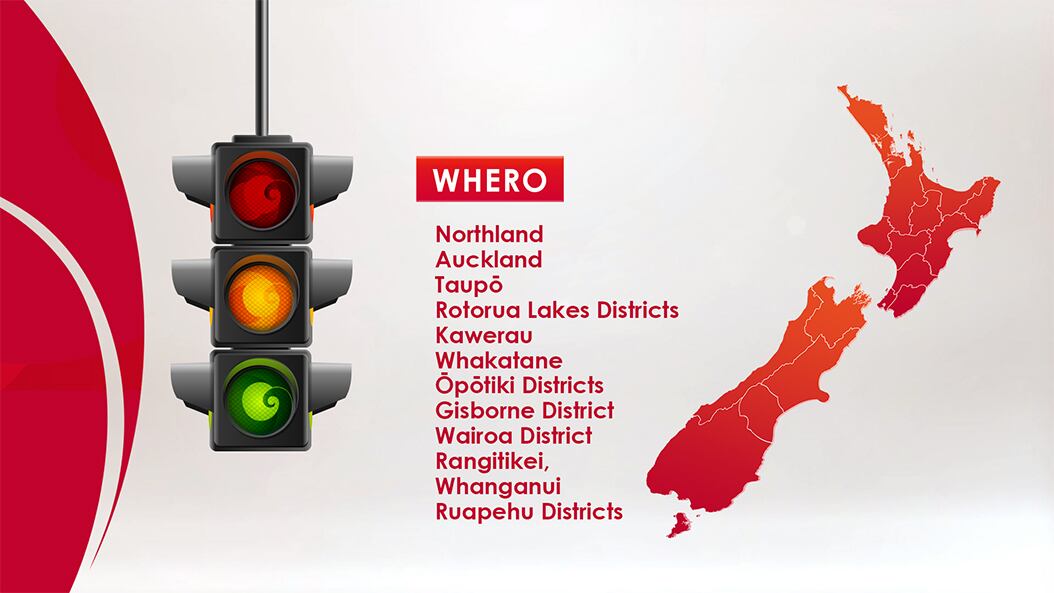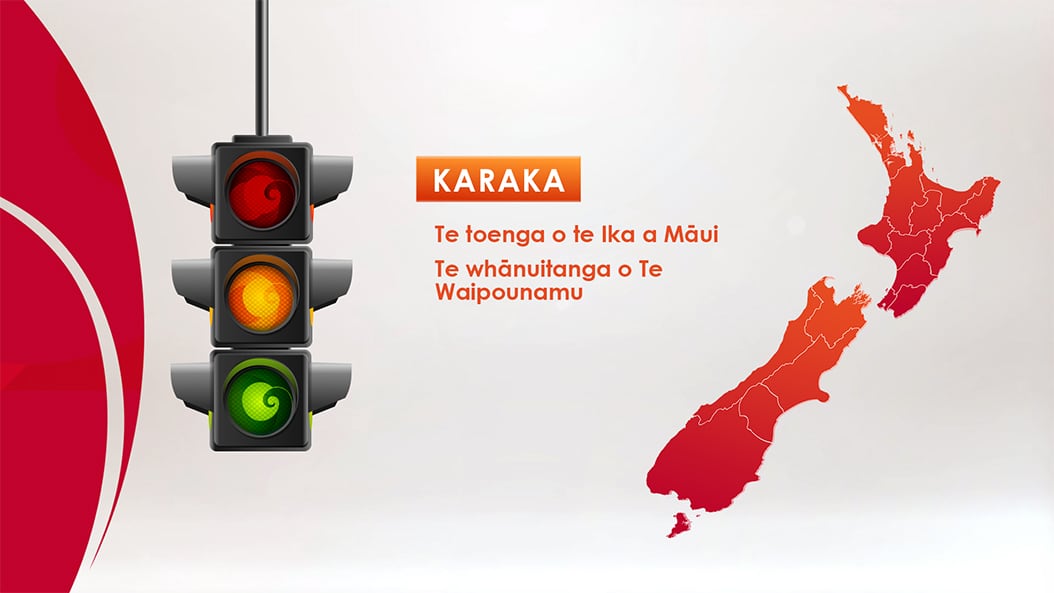Northland, Auckland, Taupō and Rotorua Lakes Districts, Kawerau, Whakatāne, Ōpōtiki Districts, Gisborne District, Wairoa District, Rangitīkei, Whanganui and Ruapehu Districts will move into Red under the government’s new Traffic Lights System.

The rest of the North Island and the South Island including Stewart Island will move in at Orange.

Prime Minister Jacinda Ardern says a cautious approach is being used at the start “focused on protecting people and their jobs".
“We are not moving any regions to Green immediately while we continue to get vaccination rates up and transition the country to the new framework."
To achieve this, $120 million continues to be distributed to support Māori communities to fast-track vaccination efforts and prepare for the traffic light system, she says.
“Our next phase is focused on minimising the impact of Covid-19 and protecting people.
“We have been cautious with this initial designation of traffic lights as the new framework beds in. Cabinet will review settings and provide an update on Monday, December 13. The next update by ministers will be on Monday, January 17, and will continue on a fortnightly basis.
“The factors considered when setting the colours in each region include vaccination, the state of the health system, testing, contact tracing and case management capacity, as well as the rate and effect of COVID-19 transmission."
She says New Zealand has come through the past two years of Covid in better shape than nearly anywhere in the world, with the lowest case and death rates in the OECD, a growing economy, and among the highest rates of vaccination in the world.
“The certainty and stability of the traffic lights replaces the sudden lockdowns and restrictions of alert levels. Our schools will stay open at every colour and businesses will have protection through My Vaccine Passes to keep operating.”
Other than the existing Auckland boundary, which lifts on January 17, there will be no new restrictions on travel between regions.
“Vaccinated New Zealanders using vaccine passes will be able to do many of the things that were previously treated as high risk like safely going to bars and restaurants, getting a haircut, and going to a concert or the gym. In Auckland, it means seeing friends and family indoors again. “
She called for the 160,889 eligible Kiwis to get a second dose.
“If everyone got it this week we would be at 89.3 per cent fully vaccinated.”
“Red is the highest level in the new system, which is why Auckland has moved in at Red as the epicentre of the current outbreak, and we’ve taken strong account of vaccination rates and vulnerable populations in the other regions at Red.
“Red provides extra protections against Covid-19 such as requiring both vaccine passes and some capacity limits in the most-high risk settings – that’s because if someone has Covid-19, the virus will find it harder to spread among fewer people who are at a distance.
“As we see what happens to cases and vaccination levels we can look to move regions down to Orange over time, where there are no gathering limits for those who are using vaccine passes.
“But Covid-19 is still with us, and the emergence of the Omicron variant overseas is a reminder of why we need to maintain a careful approach and keep public health measures in place to protect us.
The prime minister says 85 percent of eligible New Zealanders are now fully vaccinated, 92 percent with their first dose and boosters being rolled out.
“Thank you New Zealand. We’re getting through our toughest period to date, it’s been long but we’re well set to move forward with caution into the traffic lights, into summer, into 2022, and beyond,” Jacinda Ardern said.
For more information go to the Unite Against Covid-19 website.
